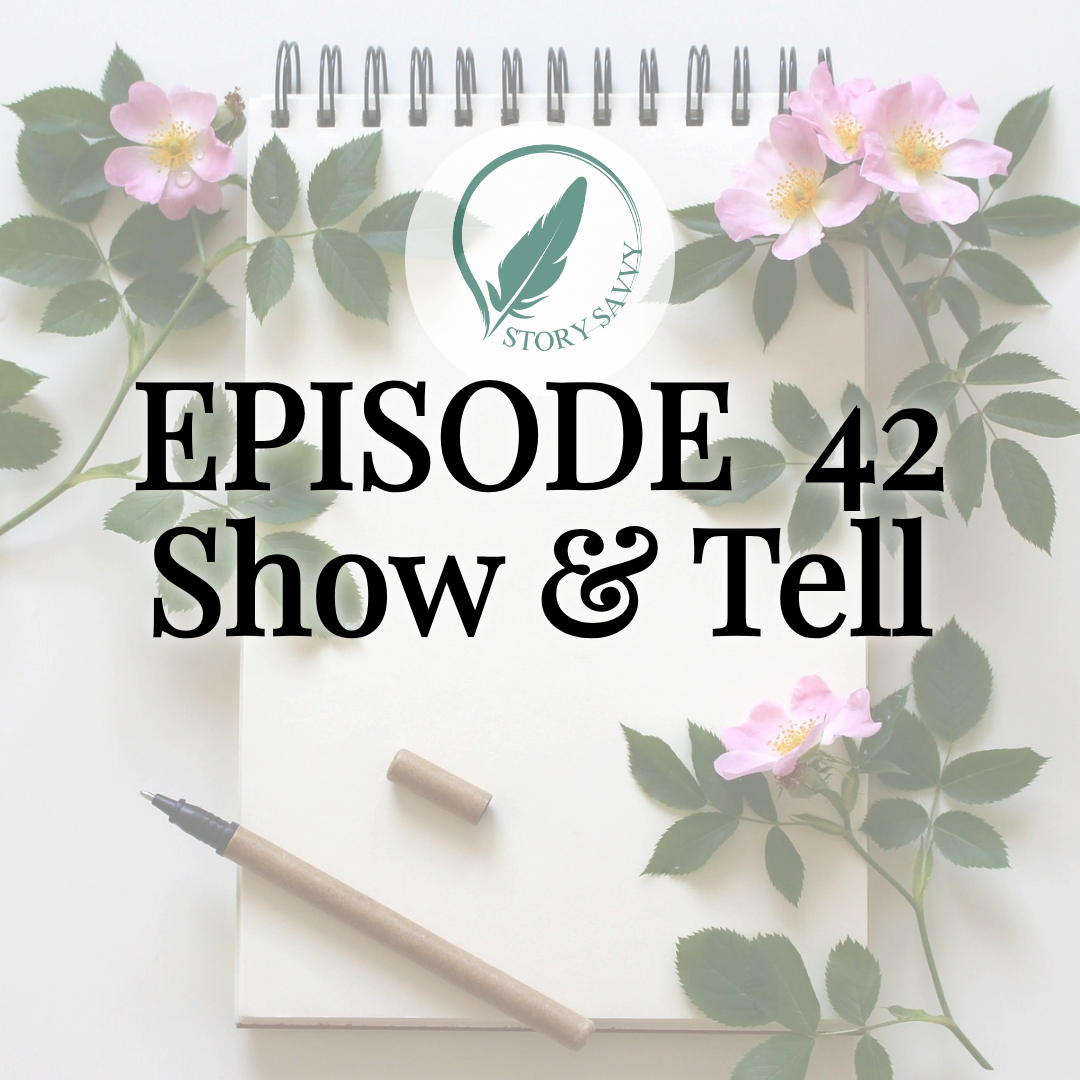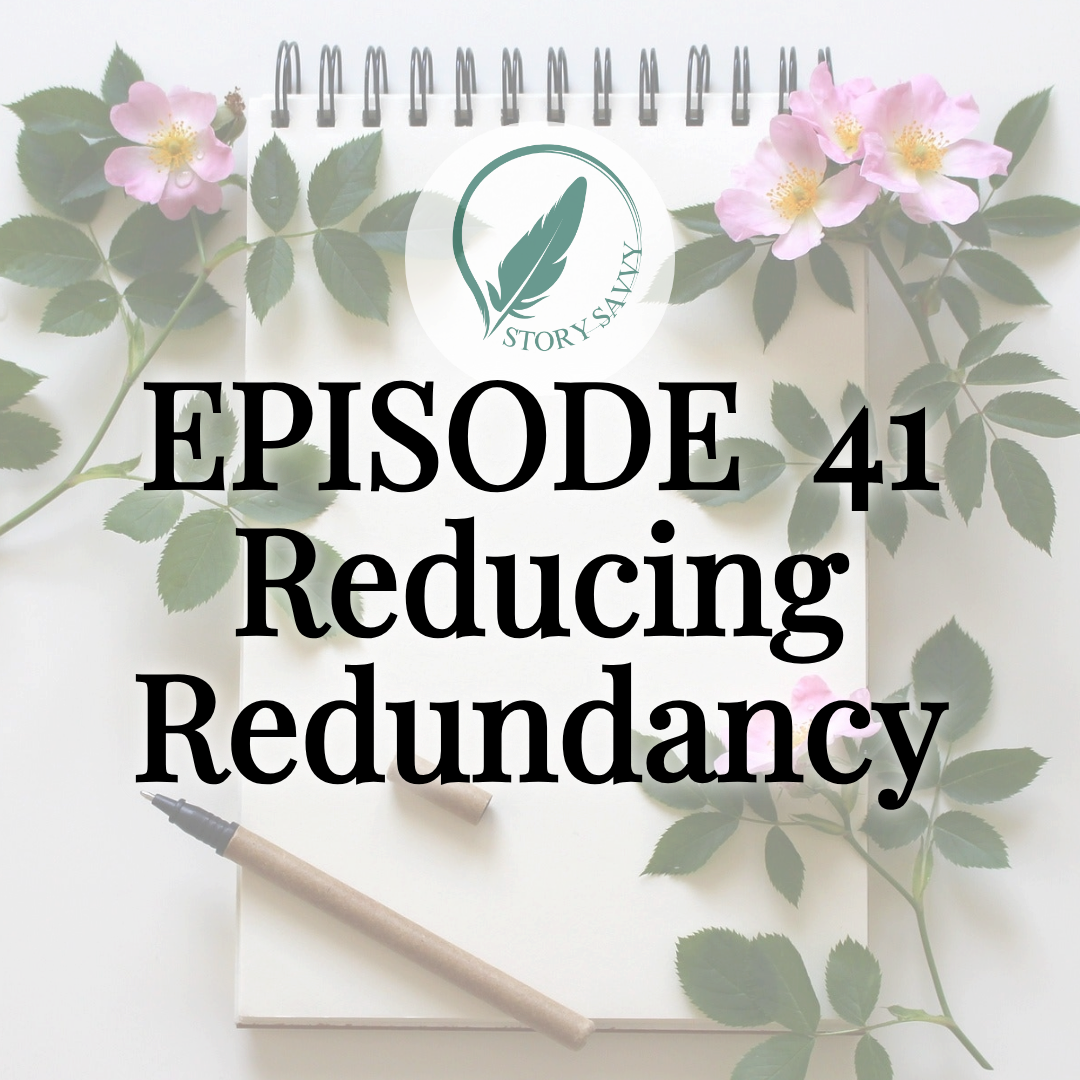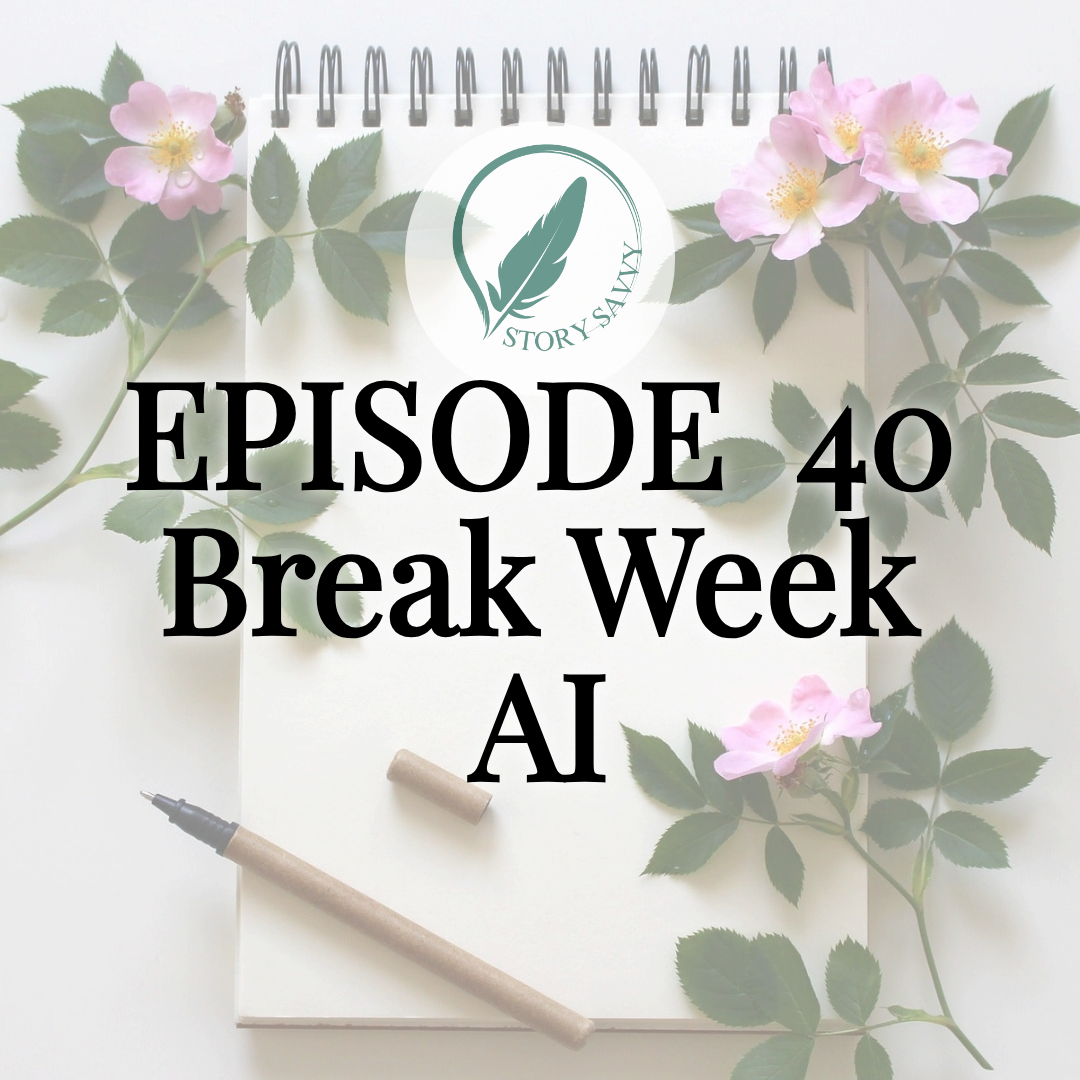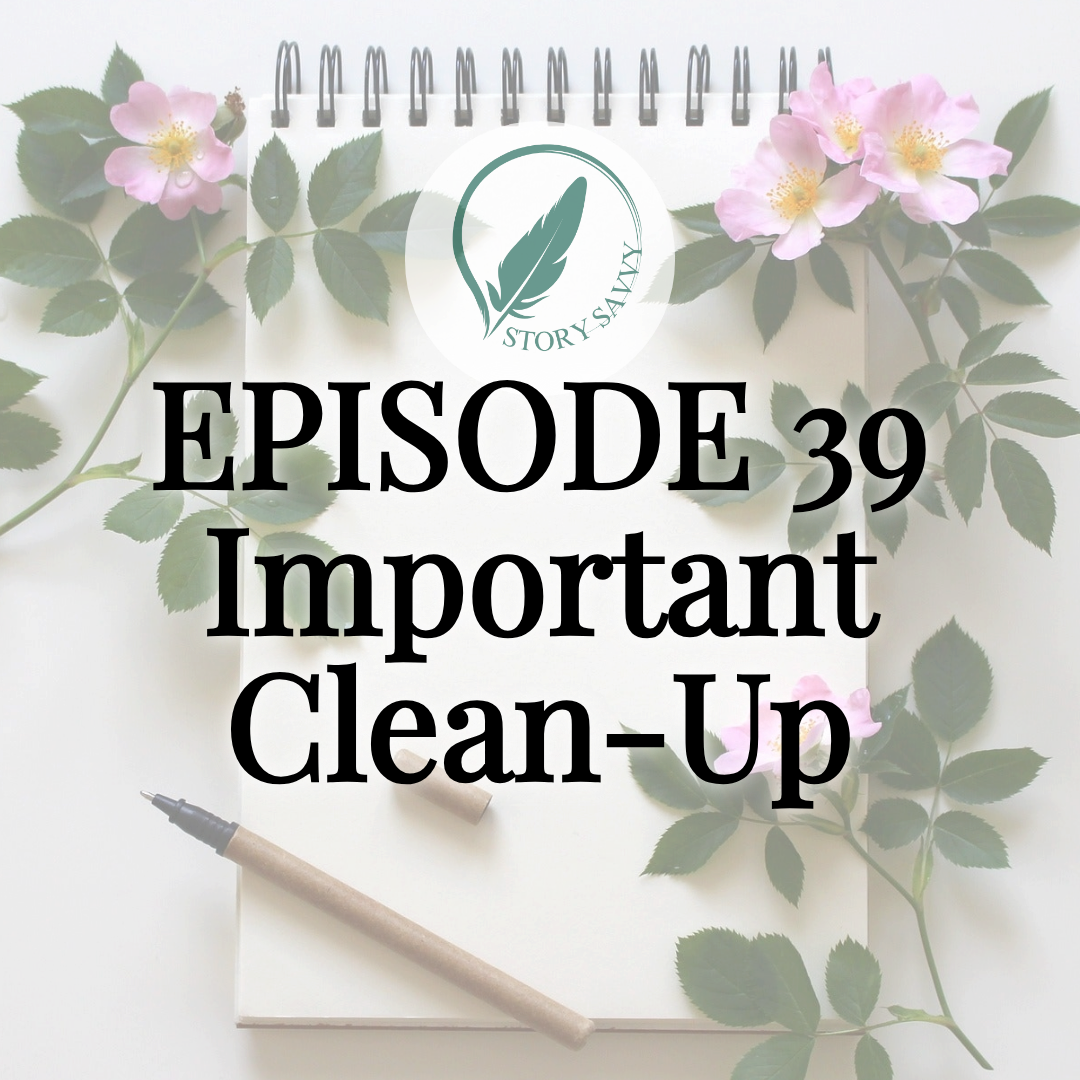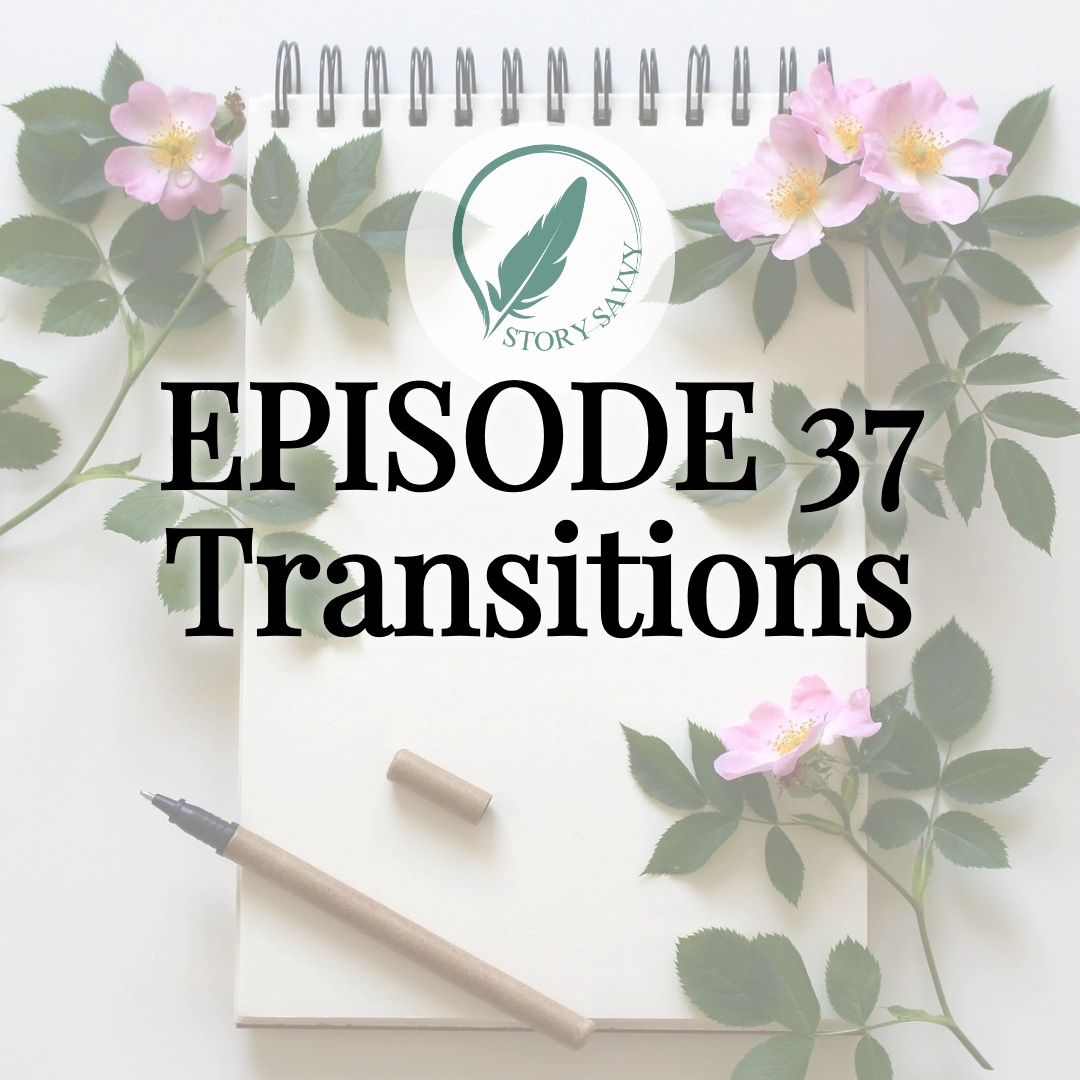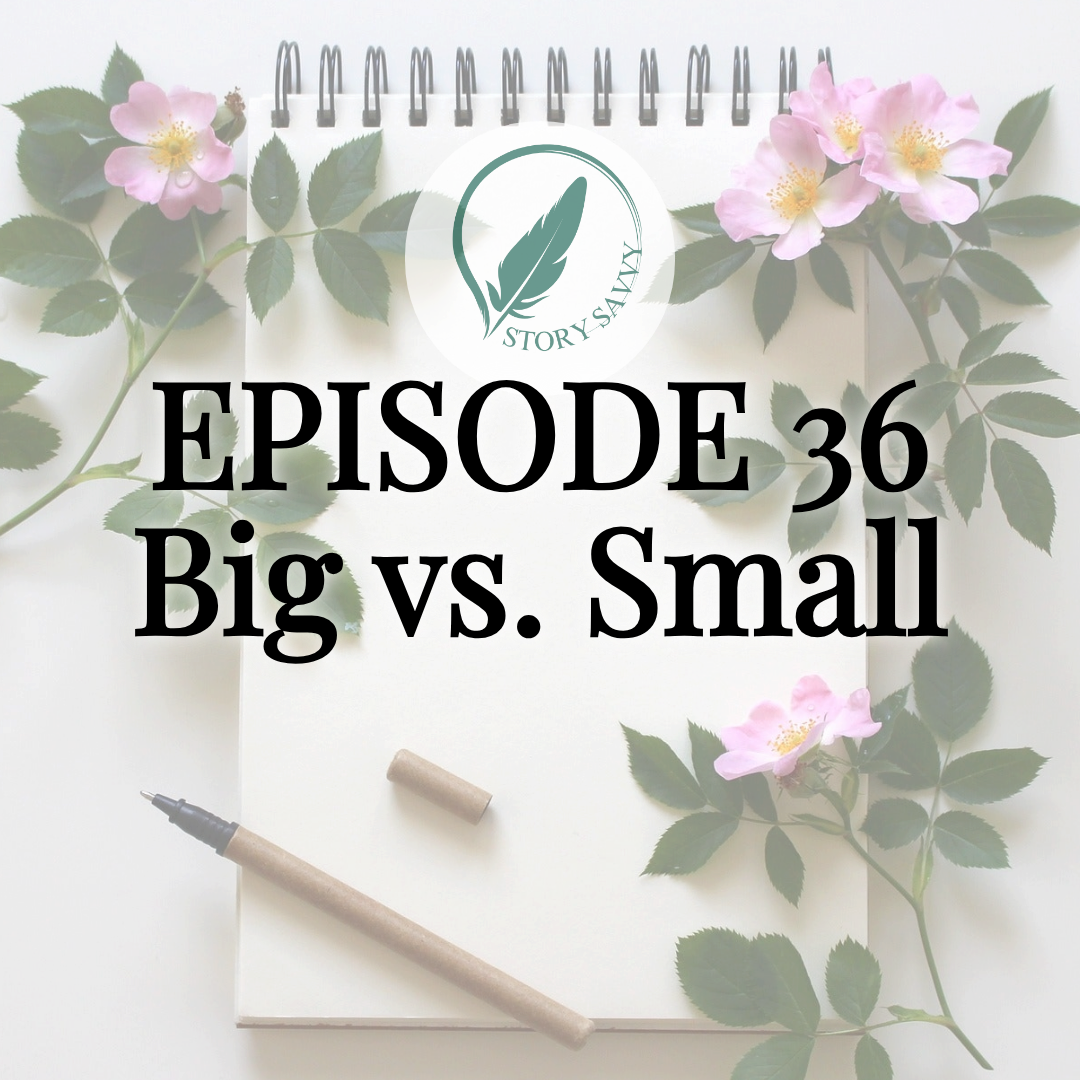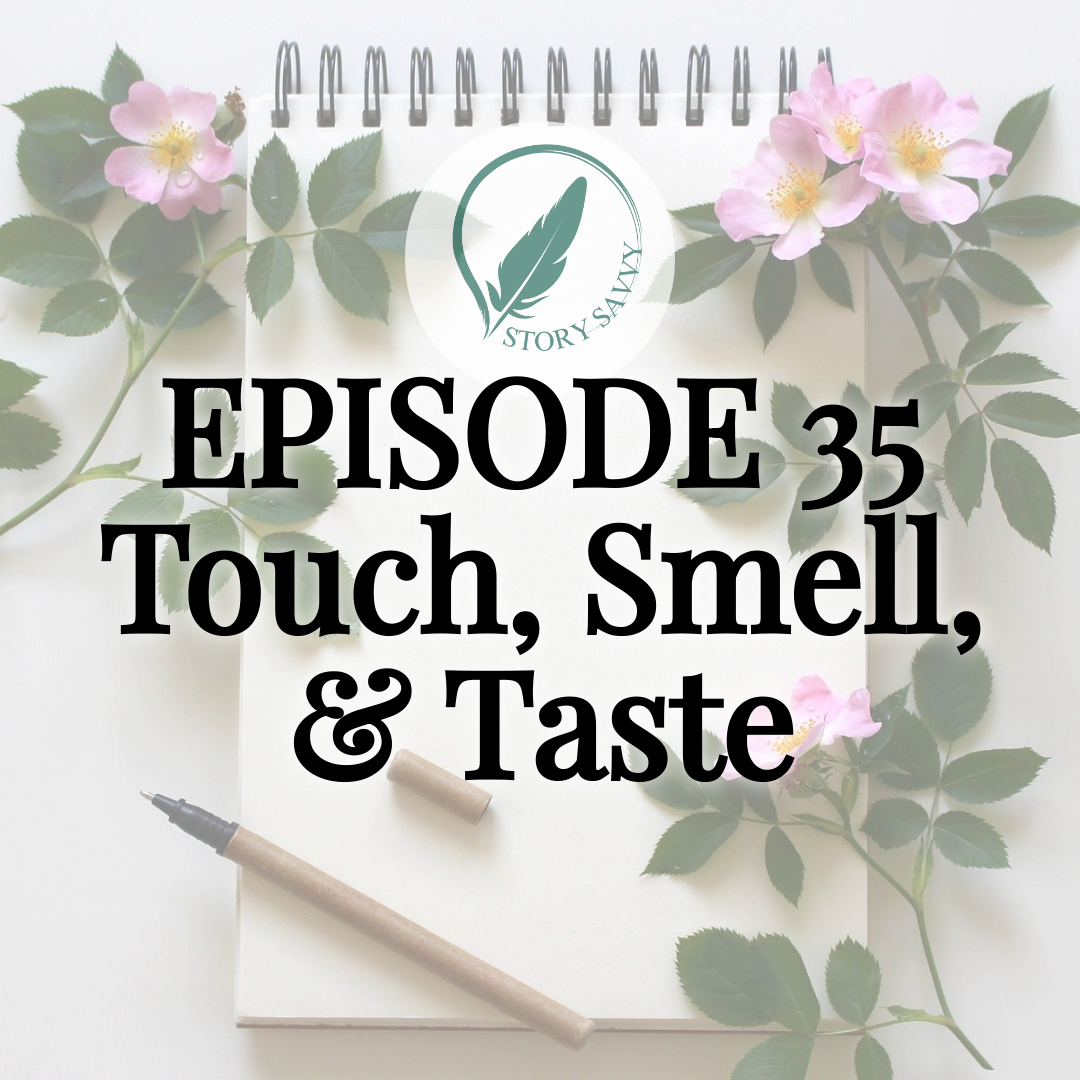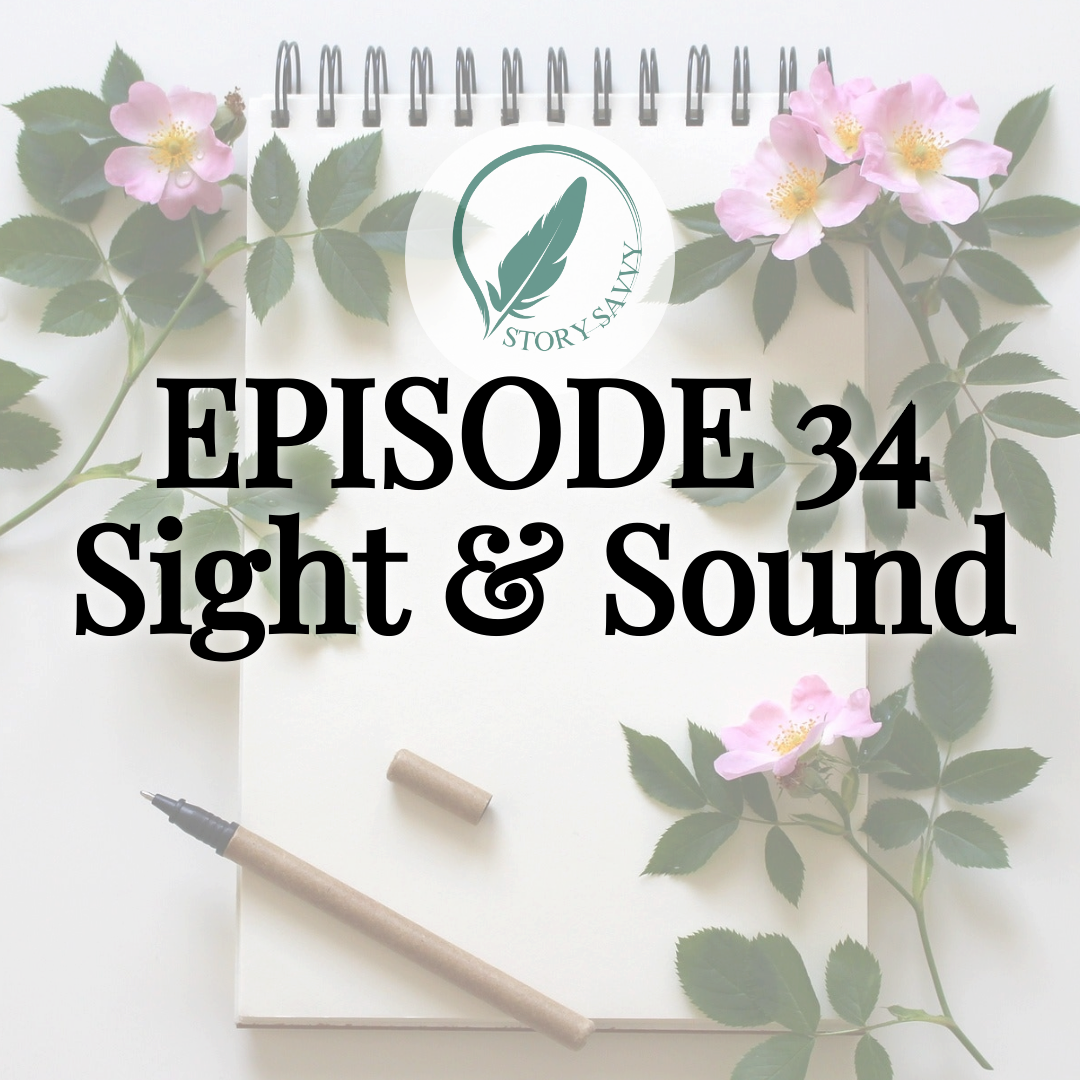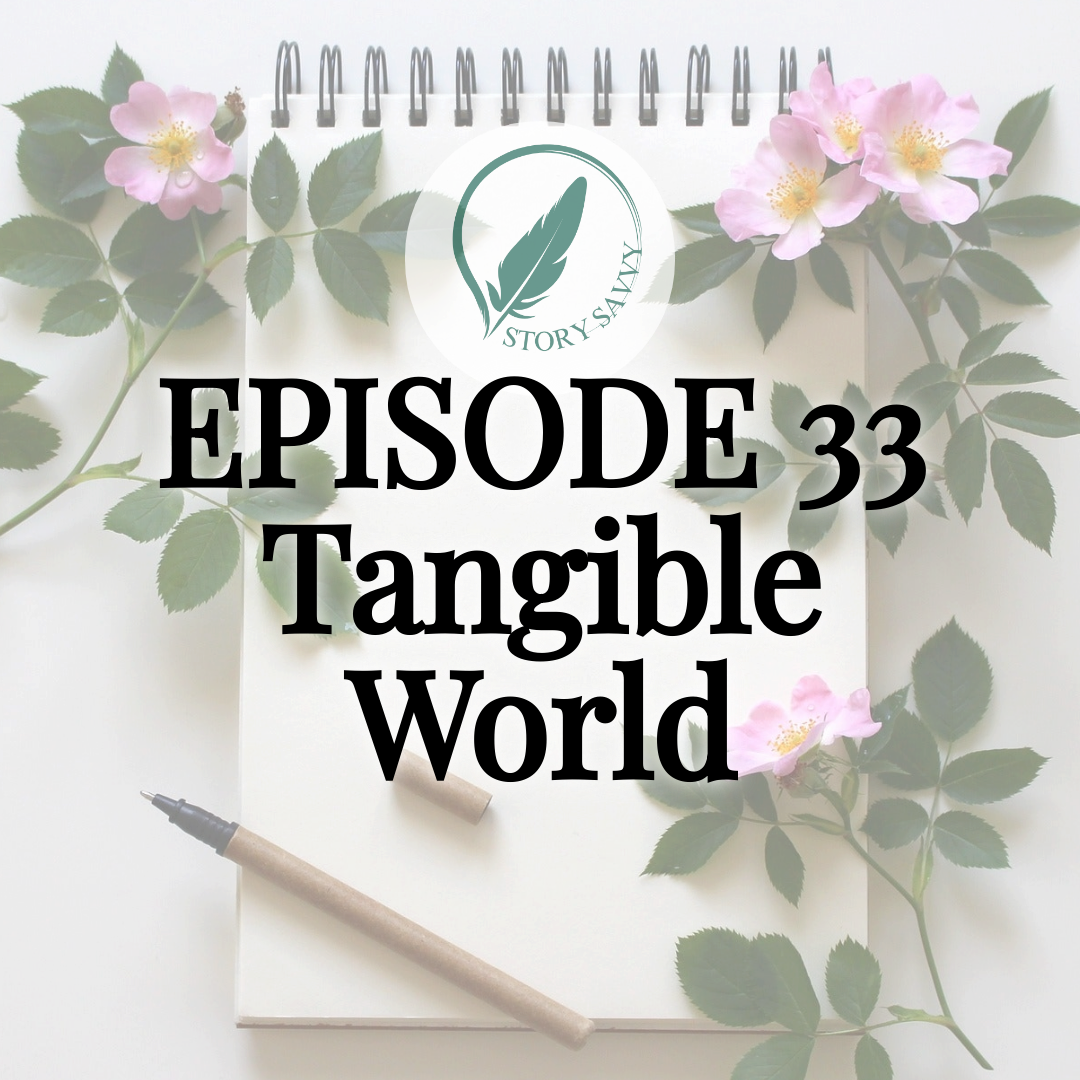Subplots & Plot Threads: Story Savvy Self-Editing Episode 25
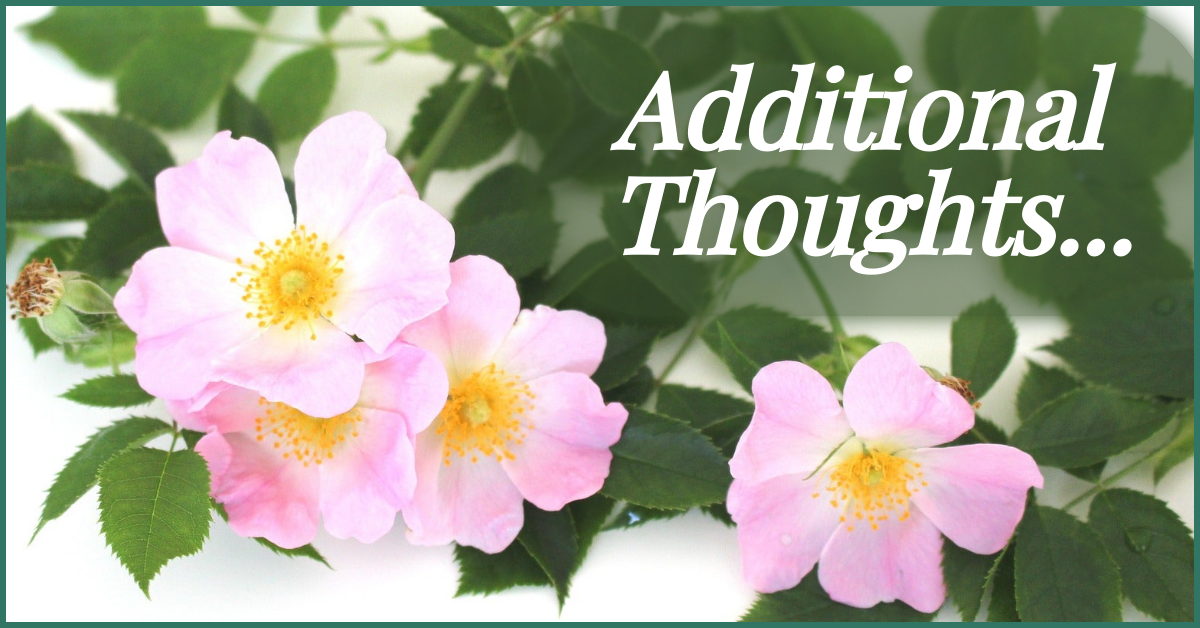
For anyone unfamiliar with Maslow's Hierarchy of Needs, which I referenced in this episode, here's a link I like which goes over it! https://fiction-writers-mentor.com/maslows-hierarchy-of-needs/
Episode 25 Overview:
Subplots & Plot Threads
"Are my plot threads and subplots working well with the overarching plot? Do I know which is my main plot, and which are secondary?"
Looking for insightful plot structure tips, especially when it comes to subplots and plot threads? In this writing podcast for authors, we dive into practical plot structure advice and offer strategies for identifying and fixing story problems.
In episode 25 of the Story Savvy Self-Editing series, developmental editor Rebecca Hartwell and aspiring fantasy author Agnes Wolfe [authorsalcove.com] explore how to incorporate subplots and plot threads effectively within your story.
Rebecca defines the difference between subplots and plot threads, explains how to identify your dominant plot, and walks you through evaluating and revising subplots for maximum impact.
Learn how to tell one clear story—even when juggling multiple POVs or emotional tones (think Game of Thrones)—and when unresolved subplots are okay to leave open-ended.
Rebecca will guide you through:
- How to tell which plot is your “main” one—especially if you blend genres
- The difference between subplots and plot threads (and why it matters)
- How limiting your subplots can strengthen your story
- What makes a plot thread or subplot effective
- When it’s okay to leave a plot thread hanging.
Whether you're overwhelmed by too many plot lines or unsure if you're effectively incorporating a plot thread, this episode will help you turn your good story into a great one.
Recommended Resources:
- Need a Developmental Editor? www.hartboundediting.com
- Author’ Alcove Membership: http://authrosalcove.com
- Fantasy Book Giveaway: www.AuthorsAlcove.org
Next week we continue the conversation: how and when to wrap up your subplots. So be sure to check that one out as well!
Episode 25 Transcript:
Subplots & Plot Threads
Rebecca Hartwell: Hello and welcome to the Hart Bound Editing Podcast. This is episode 25 of the Story Savvy Self Editing series where we tackle the 52 biggest self-editing topics and tips to help you make your good story great as an aspiring author asks me, a developmental editor, all of the questions that you have wanted to.
We've covered a bunch in this series so far, including last week's episode on Consequences & Processing, which was following our discussion of Plot Twists.
Today we are going to take a look at subplots and plot threads. By the end of this episode, you will hopefully feel confident naming all of your different plot threads, making sure that they are worth including, that they are working well, and feel confident getting them all woven together into a more cohesive whole.
Joining me to ask all of the questions is my friend and co-host, Agnes Wolf. Hello!
Agnes Wolfe: Hi. I'm an aspiring fantasy author who hopes to release her first middle grade fantasy later next year. September 13th is the goal. I'm here today to tackle the topic of using, checking, and improving subplots.
So, how can we tell the difference between our main plot and subplot? Especially if we are writing two genres together, like action adventure plus romance, or mystery plus thriller, and we aren't sure which is the dominant plot?
Rebecca: There are a few ways to look at this.
First, I recommend researching the two genres—or more, if you're caught between three or four—and see what the requirements, expectations, conventions, and things like that there are for each of those genres. Then look at those lists and see on which of those lists you're hitting the highest percentage of those moments and aspects and elements? That's going to be your dominant. So, if you have a mystery and a romance and you're hitting all of the requirements for a murder mystery and half of the requirements for the romance, the mystery is going to be your dominant.
There are a couple of other questions that you can ask yourself here if that answer isn't being helpful to you. I've got a whole list of these.
So, the next would be: what is the core theme or message that you want your reader to walk away with? Which plot line is delivering that theme or message?
Next question would be: what are the core stakes throughout the story or the primary emotion that gets explored or experienced the most? Okay, which plot is delivering that core emotion?
Which plot gets the most chapters or pages or paragraphs dedicated to it? If you were to sort your entire manuscript by how many words are dedicated to each of your different plot lines, which has the highest word count? That's probably your dominant.
How would you define the payoff of the whole story in one sentence? That could be: they catch the murderer, they have their happily ever after—something like that. Okay, which plot line is delivering that? That's probably dominant.
And then the last one, the last thought here, is” if you have an even spread of these questions, so if all of these different questions, when you ask them, don't have the same answer, then I recommend using external feedback. Be that a beta reader, alpha reader, developmental editor, anyone. To sort of help you break that tie, essentially.
Or you can use how you want to market the book as your tiebreaker. Do you want to have a romance-looking romance cover on it? Okay, then it's probably—you should work on making your romance plot the answer to those questions. Do you want to market it as a gritty thriller? Do you want that kind of cover and that kind of, you know, marketing aesthetic? Okay, then that's probably the right answer, and you should work on making that truly the primary plot.
Agnes: You kind of just answered this question, but I'm going to ask anyway because, you know, you mentioned thinking about how you're marketing—but why is it important to know which one? If you have two, that is the plot, and which one is the subplot?
Rebecca: It really matters going back to, I think it was episode two, where we were talking about genre. That's what most people look for first when they're shopping for books. You go to that section in the library, you go to that section in the bookstore, that page on Amazon, because each genre has its own emotional promise. So, if you are promising an emotion, that has to be delivered. And it is the primary plot that is going to deliver it.
So, if you are looking at a book and you don't know what the primary plot is, then you can't honestly promise any emotional payoff. If you don't know what your primary plot is, you don't know what primary genre you're writing in. And that's a big problem, which you can go back to episode two to really get the in-depth answer on.
Agnes: So, what is, you know, we're talking about both subplot and plot threads, and I think most of us have a vague idea of what subplot is or plot threads. But I think it's good to have like a definition of each. So that way we know what we're referring to throughout this conversation. What is the difference between a subplot and a plot thread?
Rebecca: These are somewhat nebulous terms in the writing world, but here are my definitions that I use when I'm talking about these things:
A plot thread is a through line of goals, motives, conflicts, and cause and effect on one specific topic, towards one specific moment of payoff. This can refer to the main plot or subplots, or the setup of a specific moment threaded through the whole story. But a plot thread does not necessarily have to hit any genre beats like for a subplot
So, like I just said, a subplot is definable by having a genre association. It has genre beats, and conventions, and expectations that it is hitting, including, but not limited to: the stakes, the core emotion, the kind of message or theme, again, conventions, expectations, obligatory moments—all of those sort of things. Any plot of this nature in a story that is not the primary plot is a subplot. For example, if you have a rebellion plot and a romance plot in one book, those are both genres. Those both have conventions and expectations. So, one of them will be the primary, and one of them is a subplot—which is a step up from talking about plot threads.
Agnes: So, referring to plot threads, like I'm thinking about one of my plot threads where it’s basically, “finding inner strength” is probably the best way to sum it up. And how do I know—you don't have to use that one unless you want to—but how do you know if you are doing it effectively and it adds to your story?
Rebecca: This one actually has a really short and sweet answer.
A plot thread is working well in the story if it has a definable payoff, and if the moments foreshadowing that payoff can be (and are) delivered in an interesting way.
So, with your example, if you have a moment where that finding inner strength plot thread pays off, and if the moments where you are exploring that theme—where it is threaded back through—are delivered in a way other than exposition, it's probably working pretty well.
Agnes: So, should all of the subplots follow the same theme as, like, our main plot?
Rebecca: If they do, great. But if that's not the case in what you wrote, or if that's not what you were going for, then tangentially related to that main plot is fine.
So if you have a main plot with a theme of “you can find purpose if you connect with other people,” then a tangential subplot theme might be “we get to define what our own life purpose is for ourselves,” or “you have to actually look for something in order to find it,” or “being independent isn't always the best way to live.” All of those are connected to the main plot theme, but sort of a branch off from it. And that is totally fine.
Agnes: I know that part of this answer is actually going to be knowing your audience before I get to the question, because like I'm thinking, I prefer middle grade fantasy for a reason. But there are people who like Game of Thrones, and one of the main reasons I do not like Game of Thrones is because it has too many subplots for me. So, my question is: can you have too many subplots or can you have too few?
Rebecca: Short answer is: yes, to the first, no, to the second.
There is always wiggle room for any of these answers for experienced writers who have really honed their skills and practiced a lot of this. But generally, I say that one main plot and more than two subplots is probably too many. And again, I refer you back to my definitions on that. I am not talking about plot threads. Every major moment in just the main plot can have its own plot thread. We're just talking about genre-tagged subplots here.
On the other side of that, you really cannot have too few. One plot with zero subplots can absolutely be a solid, interesting book. That one plot just needs to have a lot going for it, and a lot going on, and probably a lot going wrong, to keep things interesting.
Agnes: And I think also about the knowing your audience, because I know myself—like one, what you just said defines what I enjoy. But there are people who enjoy like Game of Thrones or other books that have like so many that I have trouble keeping track.
Rebecca: But bear in mind, those are masterful, experienced writers who have spent decades honing their ability to present that many plots concurrently, well.
Agnes: That’s true. So, when you're looking at subplots, what are some things you should consider during the revision editing process?
Rebecca: I recommend that you ask yourself the following questions and fix the answers as needed.
Number one is: when my characters are pursuing a subplot, are they completely distracted from the main plot? If so, can you fix that?
Are they moving away from the main plot when they are on the subplot? Or are they moving in a completely different direction from it? If so, can you use that to add interest, or do you want to fix that?
Third question would be: is trying to include the subplot forcing you to include more info-dump or exposition than the payoff for that subplot is worth?
Question four would be: even if it isn't a matter of info dump and exposition, is the subplot's payoff still worth the word count that you are spending on it in general?
Question five would be: is the subplot strengthening the main plot or is it undermining it—depending on what you're going for? Because sometimes that can be a goal. Do you need to fix whatever that answer is?
Sixth question to ask yourself would be: does the main plot have to go completely on pause while the protagonist is doing a subplot? If you have to sort of freeze that main plot to come back to later, and it can't advance while the subplot is happening, then that's a problem worth addressing.
And then seventh question—and last one on this list here I've got—is: is the subplot adding to the core story as I want my readers to remember it a year after they finish reading it? So, they aren't going to remember the details. They probably won't even remember the protagonist's name. But they're going to remember an impression. And if your subplot isn't contributing to that, then do you want to scrap it, or do you want to try to fix it so that it is contributing and is earning its place alongside the main plot more?
Agnes: I do know that I have talked to others—as I've talked to other authors, one of the things they have said is sometimes the subplot starts to take over. And what they end up doing is—actually that with one of them, Chelle Cypress’s Unmasking the Curse—she actually made a 1.5 because she had to take that whole section out, and she turned it into a little novella. And I've heard of other people who do it, and they use that little subplot as a marketing method. So, it's a freebie. It's, you know, a little novella free in the mail or in your newsletter. So, I think there's also those sort of options as well. And then I'm sure—I'm sure there's famous authors that I can't think of one off the top of my head, but I know there are—who have done the same thing, where they did a novella from a subplot. But anyway.
Rebecca: I love that idea.
Agnes: So how closely related should the subplot be to our main plot?
Rebecca: There's no universal answer to this. I suggest "as closely as you can manage" as an answer but would also say that "noticeably connected" is an acceptable baseline as well.
As for how to connect a subplot more to that main plot—if you want to, or if you feel that it's needed—my number one suggestion would be: look at making the main plot and the subplot line up more on the same goals, motives, conflicts, any other aspect like that. Make them head in the same direction.
Second suggestion would be: make them explore the same theme or message more clearly or directly, but you could do so from different angles or different perspectives.
Third suggestion would be: make each of the plot lines—be that the main plot or a subplot—have repercussions in the other ones more. So, make your main plot affect the subplots and vice versa to a more tangible degree.
And then fourth, and lastly, I suggest that you make sure that when the protagonist is dealing with a subplot event or conversation, they are still thinking about (and trying to get back to) the main plot a little bit more. And if you do that well, it can bring them into feeling like they are more aligned, even if they are more separate, practically speaking.
Agnes: I think one of the things you've already said about this is that when it's distracting from the main plot. But what would make a subplot distracting? And to take away from the overall story, like what is it about it?
Rebecca: Really the same things that I listed for when it might need to be edited. So that same list of: what purpose it’s doing, what it's failing to do. All of that kind of stuff. I'll avoid repeating myself.
Agnes: So, what are some of the biggest mistakes you see as people try to incorporate a plot thread? Especially as a developmental editor who has seen lots of books in the very beginning stages.
Rebecca: Yes. Number one would be: they are trying to tell two entirely separate stories in one. And I especially see this with flashbacks or backstory timelines as a subplot, which I strongly caution against. You want to tell one story in one book. And if that means you write a prequel novella in addition to The Book, that can be a good way to handle that.
Second big mistake would be: not enough is done to transition from the emotions of one plot line to another. For example, if you're combining a romance/love plot with a darker plot—or one that's lower on Maslow's Hierarchy of Needs, which I've mentioned in other episodes—then you really need to ease the reader between the moments of "I am angry and being mistreated and in fight mode," and the moments of "Oh my gosh, you're so cute, can we please kiss?"
Obviously, there's going to be some overlap, and you can play with how you want to mix those lighter and darker emotions that come from very different places internally. But it's a fairly common issue that I see, where the action-adventure emotions end up being undercut by the romance. Where you have this moment of, "Well, that couldn't have actually been that serious if they're switching over to lovey-dovey quite this quickly." Or on the reverse side of that, the romantic or sexy moments get soured as creepy or unhealthy because that action/adventure emotion and place of being is too closely butted up against that and mixing in without that transition.
The third biggest mistake that I often see is specific to multi-protagonist, multi-POV books—particularly high fantasy. And you brought up Game of Thrones, which is a perfect example of doing it well. The mistake that I've seen is when people don't—so specifically—there has to be a main plot in a book. And you can come at it from different angles, you can have one be more important than the others, but it all has to come down to one main plot. This can be approached as: all of your different POV protagonists are all on the same path. They are all going towards a common destination, and there's enough clues in there that this is going to happen. Or, like in Game of Thrones, you have common goals—that everyone is trying to sit on the Iron Throne—or common enemies of "let's avoid whatever those monsters were in the North." —so you have commonalities so that all of these different POVs are essentially on one plot path. Or you can approach this as: everyone has their own plot, but one of them is going to override the others. One of them is a main plot. That’s who you're expecting the reader to be invested in—sorry—you're expecting the reader to be invested in—so they know to pay more attention to that one than the others.
The important thing is that you make it clear to the reader which is the main plot. Because, as we mentioned earlier in this episode, if you don't, they won't know which genre with that emotional payoff promise they are going to get in the climax. That is a super important aspect that goes right back to the very beginning of this series that we were talking about with genre. So, if you can't make it clear which of these POV protagonists is on the real or the main plot, that's the problem.
Agnes: So, I wish we had a lot more time, but we do need to wrap up because I have a lot more questions. I have one last question that I'm going to ask, which is: do you have to wrap up all the subplots, or can some be unresolved at the end of the story?
Rebecca: This is a great question, and the answer depends on so many different factors that we are actually going to do an entire episode just to answer this next week.
Agnes: Okay, good. So, I can ask all those questions I had.
Rebecca: Yes.
Agnes: Anyway, thank you so much for your insight. It has always helped me. I really enjoy this series. I'm so glad that I've been able to be part of it.
Rebecca: As am I. Next week, like I said, we will go over when and why and how to tie things up in a story—including plot threads and subplots and even smaller things that you've seeded.
For right now, I would really like to thank everyone following along with this series. We would appreciate it if you could help us out by liking and subscribing to the Hart Bound Editing Podcast and the Authors Alcove Podcast, where you can find lots more content for fantasy authors and readers beyond this joint series.
Agnes: I can't wait to chat with you next week. See you then.
Rebecca: Thank you so much for listening to the Hart Bound Editing Podcast. I look forward to bringing you more content to help you make your good story great, so it can change lives, and change your world. Follow along to hear more, or visit my website linked in the description to learn how I can help you and your story to flourish.
See you next time!

